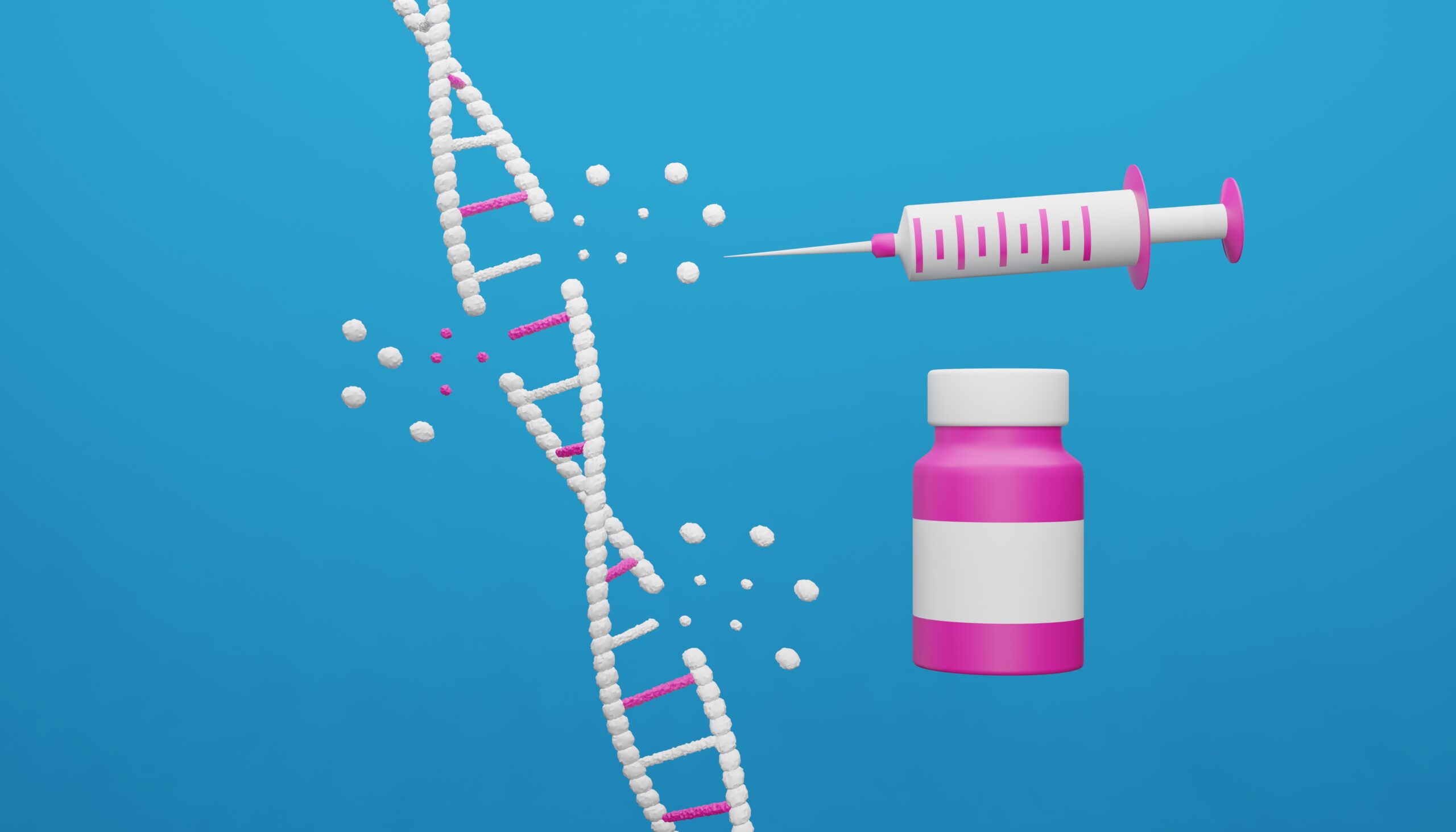Sickle cell anemia (SCA) is a genetic disease that results when red blood cells manifest a sickled, crescent shape rather than their normal oval form. Healthy red blood cells travel through arteries to circulate essential nutrients, such as oxygen, to different parts of the body. In sickle cell anemia, however, the sickle-shaped red blood cells can easily become stuck in arteries, clogging blood flow and creating a blockage known as “vaso-occlusion“. Vaso-occlusion can cause severe pain and internal organ damage as a result of minimal oxygen circulation.
The disease is caused by a genetic mutation in the gene that codes for “hemoglobin” – a protein that makes up the majority of red blood cell content and helps the cells transfer oxygen throughout the body. Hemoglobin is comprised of four different molecule subunits that give it its structure: two chains of “alpha-globin” and two chains of “beta-globin.” In sickle cell anemia, the beta-globin chains become stiff and inflexible, resulting in the red blood cells’ sickled shape.
Red blood cells that are sickle-shaped don’t flow as easily through arteries.
Image Source: Callista Images
The only current cure for sickle cell anemia is a bone marrow transplant, the replacement of a sick person’s bone marrow with a healthy one. Because red blood cells develop in the bone marrow from stem cells (cells with the potential to develop into all cell types), transfusing bone marrow that contains stem cells with non-mutated genes into a person with SCA allows for them to begin producing normal red blood cells. Unfortunately, this procedure is incredibly expensive and risky; it is difficult to find a proper bone marrow match, and the transfusion can lead to fatal rejection of the bone marrow, so it is only done in extreme cases. Other treatments are preventative and only seek to mitigate symptoms rather than to cure the disease.
Recently, researchers at the University of California, Los Angeles (UCLA) have developed a gene therapy treatment involving the injection of a “lentiviral vector”, which is a virus that has been deactivated and modified to contain the genes for the healthy beta-globin chains in hemoglobin. When injected into those with sickle cell anemia, the virus can travel into the bone marrow, providing instructions for stem cells to create healthy red blood cells.
This method is a major breakthrough in the search for a cure; it is both cheaper and safer compared to bone marrow transplants, and is currently up for approval from the FDA! This vector’s approval would also be another step forward for the development of gene therapy treatments for many other diseases and provides hope for the millions of people in the world affected by sickle cell anemia.
Featured Image: Tilegen










